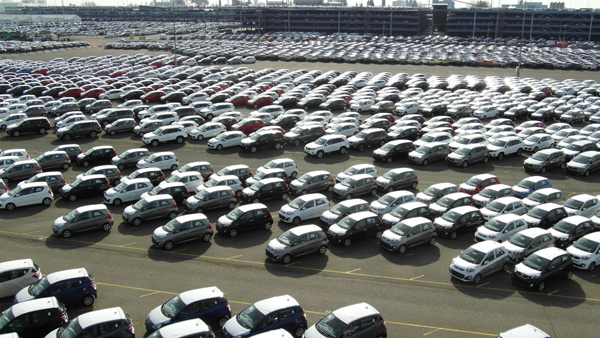 Wastefully expensive lots of inventory, or a vital link in the finished vehicle logistics chain? Operators are investing in technology and process innovations to make storage yards work harder.
Wastefully expensive lots of inventory, or a vital link in the finished vehicle logistics chain? Operators are investing in technology and process innovations to make storage yards work harder.
For the industry that invented lean production and the concept of single-piece flow, the sight of thousands of valuable vehicles sitting stationary in yards and storage lots could be uncomfortable to say the least. Indeed, shots of disused airfields filled with unsold cars were among the industry’s most painful images during the dark days of the financial crisis.
Today the automotive industry is trimmed down, fighting fit, more agile, and leaner than before. Yet its yards are busier than ever, for three main reasons. First, as they always have, yards act as an essential buffer between different stages in the supply chain. A plant may turn out a vehicle every minute, but each of those cars usually has to wait somewhere for nine companions to fill a truck going to the right location before it can be economically driven away. If the next stage in its journey is by ship, it likely has to wait for several thousand other cars.
Then there’s the increasing role that yards play in the manufacturing process itself. There are good reasons to postpone certain final assembly operations as late as possible: to give the customer the freedom to customise their new car without having to wait months for the privilege, for example, or to reduce vehicle inventories at sales companies while keeping the number of available options high. For an increasing number of carmakers, a yard in the vehicle’s destination market is the logical place to carry out such late assembly operations. Yards can offer enough scale to justify investment in the necessary equipment and skills, and consolidating activities in one place helps with quality monitoring, too.
Finally, there’s volatility. The shocks of 2008 might have been an extreme example, but even when overall production capacity is better matched to final demand, the industry must still manage daily, monthly or quarterly mismatches between customer demand and the supply chain’s ability to deliver. And that’s before the dozens of other exceptional events that can disrupt the supply chain, from transport delays to quality issues.
For yard and terminal operators, these trends have two important, but conflicting implications. High volumes, diverse product ranges and increasingly complex technical activities, combined with the industry’s perennial focus on cost reduction and quality improvements, drive an intense focus on rigorous and efficient processes. At the same time, demand fluctuations and the inevitable glitches associated with complex supply chains call for great flexibility and the ability to react fast to changing situations. Achieving this combination of repeatability and flexibility in yard operations is a key challenge for car companies, service providers and the makers of the software systems that manage yard activities.
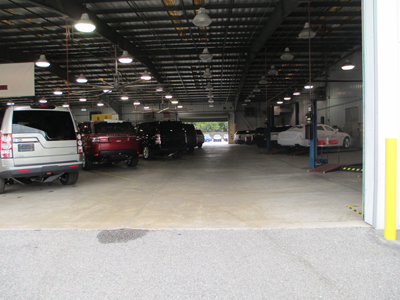
All systems go
The North American operations of Jaguar Land Rover are a good example of the increasing importance of yard and terminal activities to the overall finished vehicle supply chain. Over the past two years, the company has pursued a policy of consolidating pre-delivery inspection, corrective actions, and accessorisation activities at its three main US import terminals at the ports of Baltimore, Maryland; Brunswick, Georgia, and Port Hueneme, California. JLR runs its own in-house developed IT system to manage all these processes from factory gate to final delivery. According to Jim Harrington, the company’s port operations and vehicle logistics manager, the approach offers a number of advantages for the company’s dealers and customers, including the ability to delay final decisions about accessories and specification changes until the vehicle’s arrival in the US, and the inclusion of the value of those accessories in the ‘Monroney’ sticker – a label required for all new vehicles in the US with official information.
The system simplifies JLR’s relationships with its logistics suppliers, too. “We have minimal invoicing from our processors,” says Harrington. “They can see activities to be performed in real time, right in our own system, and we pay them directly for the activities they do.”
The real time visibility of the status of every vehicle in its supply chain also makes managing the logistics process easier for everyone involved. “Our inland carriers can log into our system to see which vehicles are on ships and heading their way, “ says Harrington. “That way they can plan the personnel and equipment they need well in advance.”
While JLR prefers service providers to use its system to manage yard activities, many have built their own. One such is Tacoma, Washington-based Auto Warehousing Company (AWC), which uses an in-house developed IT system called VIPS (Vehicle Inventory and Processing System) to manage all the tasks associated with the vehicles in its care. While its origins are for a port processor on the US West coast handling imported vehicles, the company has since expanded into a full range of vehicle supply chain activities, including plant releasing activities for North American manufacturers, handling around 5m vehicles per year. According to Marty Colbeck, director of east coast sales at AWC, the VIPS system ensures that “every step in the process has a time and somebody’s name on it”.
 "Our inland carriers can log into our system to see which vehicles are on ships and heading their way. That way they can plan the personnel and equipment they need well in advance."
"Our inland carriers can log into our system to see which vehicles are on ships and heading their way. That way they can plan the personnel and equipment they need well in advance."- Jim Harrington, Jaguar Land Rover North America
Rick Blank, vice-president of business development and sales for Vascor, another North American automotive logistics specialist, also sees a strong IT backbone as an essential part of that offering. “Our IT department is our largest cost centre,” he says. “Our systems and processes are always evolving to support our operations team.”
In general, says Blank, the more preplanning that can be done in software, the more efficiently yard operations can be run. For examples, Vascor can allocate storage bays to vehicles before they arrive at the yard to minimise the number of times each vehicle has to be moved.
Germany’s BLG Automobile Logistics, which runs, among other locations and assets, Europe’s largest vehicle handling port in Bremerhaven, also has an in-house IT system to manage its terminal operations, technical treatment and transport, which has been under development for around 25 years, according to managing director Michael Bünning.
Having a single system that covers the complete supply chain creates the critical visibility that facilitates efficiency, Bünning explains. “At every link in the chain, it is vital that the next party can plan their activities before the car arrives, whether that activity is washing, fitting a radio, pre-delivery inspection or loading a truck or train for onward transport.”
Developing and maintaining its own system in this way works well, says Bünning, since it facilitates exchange information between the IT developers and the business. “Our IT people need to understand our operations,” he says. “But the reverse is also true: our operations people need to really understand the IT system, so they can adjust the system themselves as the situation changes, rather than having to file a change request to someone else.”
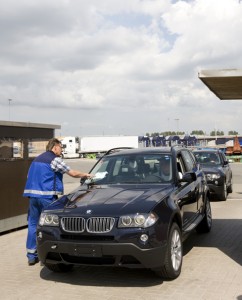
A key part of yard management, says Vascor’s Rick Blank, is the need to adapt processes to mitigate problems or constraints elsewhere in the supply chain. As an example, he cites the increased use of drive-away deliveries – driving cars on its own wheels – at some of his company’s yards, to compensate for shortages of truck capacity. When bigger problems occur, the company needs to be “quick and creative” in its responses, he says. For example, it may need to access additional capacity at short notice to cope with temporary spikes in demand.
Colbeck describes a similar need for flexibility at AWC. The company has a specialist deployment team staffed by managers selected from all its locations that can be pulled in to respond to unexpected events, whether that is taking over a supply chain from another provider at short notice, or rapidly finding and equipping a new yard to cope with an unexpected demand spike.
One way to cope with this fluctuating demand is to avoid being tied down by assets and land. “We don’t purchase a lot of property,” Blank explains. “Instead, we look for flexible leases that allow us to turn on additional locations quickly when required.” Being a less well-known supplier rather than a giant OEM can actually be a benefit when it comes to securing favourable terms for yard space, he adds.
At Toyota Logistics Services, Toyota’s vehicle logistics department in the US, national logistics manager William Barrett echoes the need for yards to be able to respond to problems and capacity issues elsewhere in the supply chain. “Unfortunately, the next step in the logistics network continues to struggle,” he says. “Rail and truck networks are at capacity and affect our ETA [estimated time of arrival] information to our customers.”
BLG’s Michael Bünning also points to high levels of variability as a major challenge in vehicle yards. “The car industry has peaks at the end of months or quarters as OEMs try to reach their sales targets. Managing those peaks is always a challenge for us,” he says. “In your terminal operations, you can increase capacity with overtime or additional labour, but you can’t suddenly get an extra 20-30% from your transportation assets.”
As these regular peaks tend to be industry-wide, he notes, it can even be difficult to rent capacity from other providers at busy times.
Effective yard operations are not only about getting the right cars in and out as fast as possible, but also about keeping them safe and damage free. Therefore, damage prevention measures such as well-established standards are important, as is proper training for staff, says Mark Morgan, director of business development at inspection specialist UniCar.
“Inspections, through hand-held capture units, can provide the data to understand the cause, cost and ways of preventing damage, and can be integrated easily into any terminal operating system,” says Morgan.
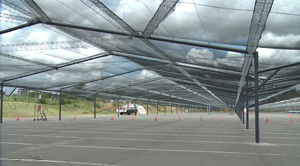
Real-time responses
The availability of real time data can be a significant boost to the productivity of yard activities if the operator has the ability to react when the situation changes. Improving that responsiveness is central to the offerings of supply chain IT specialists Inform, which provides systems for scheduling and optimising the full range of yard and terminal activities.
According to Matthias Berlit, vice-president of manufacturing logistics at the company, automated optimising tools can improve the utilisation of yard facilities by up to 20% compared with manual planning. Critically, the system can be used to modify those plans on the fly in response to changing conditions “People start with a fixed plan, we aim to make it more dynamic,” he says.
Yard operators also need to be able to alter processes quickly in response to new contracts or changing customer requirements. “A site wants to be able to set up the processes for a new contract within minutes,” says Chris Kenmore, managing director of Vehnet, a UK-based software company. “They shouldn’t have to come back to their software provider for that, they should be self sufficient in their workflow.”
Adding that ease of use and adaptability into their systems is a priority for today’s systems. Inform, says Berlit, uses a graphical user interface to allow its customers to draw new flows. “Once, defining a new business process in a software system might take four weeks,” he says. “Now our clients can often define the required processes faster than their customers.”
Jim Harrington notes that expandability was a key design criteria for JLR’s supply chain tracking system. “If we have an issue like an additional quality check, it is important that we can immediately add that into our workflows,” he says.
Future possibilities
Yard operators and users are looking for new technologies to further boost productivity. The use of RFID-based tracking systems is already becoming more widespread, and some operators are also exploring the potential of GPS-based systems to add intelligence to tracking units (see box below, 'Eyes in the sky'). “The widespread availability of mobile devices and software has transformed our customers’ expectations,” says Vehnet’s Kenmore. “They won’t accept technological barriers, they now expect to be able to access a system anywhere on any device.”
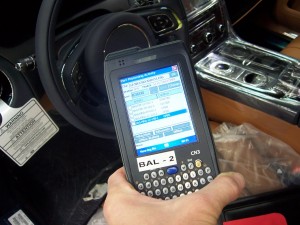
Asdell says that some of this technology is available now and most suppliers have started to incorporate it, although he predicts that costs will go down further over the next five years.
Some operators and service providers are already exploring opportunities offered by low-cost technologies developed in other industry sectors. Inform, for example, has conducted experiments using Apple’s iBeacon technology, which allows objects to indicate their presence to handheld devices using the Bluetooth wireless networking protocol. Issues of range and battery life currently limit the usefulness of the technology in the finished vehicle sector, admits Matthias Berlit.
With an increasing number of cars leaving the factory already equipped with GPS location and wireless communication technologies, there is also the potential for yard operators to make use of these technologies in their operations. “It won’t be long before self-driving cars become a reality,” predicts Berlit. “That could have huge implications for yard operations, but only if operators have the means to communicate with these systems, to tell cars about the layout of their facilities, for example, and to instruct them to travel to a particular location.”
Perhaps the area where the boundary between manufacturing and yard management is most blurred is just inside the factory gate. And it is here that software provider PINC Solutions is most active in the finished vehicle space. PINC offers systems that track vehicles and parts during assembly; however, according to CEO Matt Yearling, the end of the assembly process is often less clear cut than it might first appear.
“In carmaking you have a lot of vehicles that come off the line, but then need further operations, whether that is rectifying a quality issue, further customisation or decaling,” he says.
At some plants these ‘unfinished vehicles’ can number into the thousands, says Yearling, and manufacturers can still lose individual cars as they are packed so densely into the facility.
PINC’s focus is ensuring that vehicles don’t spend any longer than necessary sitting between production line and customer, something that requires tight integration between yard, workshop and inbound supply chain. “You can’t have vehicles coming in for accessorisation, only to discover you don’t have the parts you need,” says Lou Chauvin, the company’s vice-president of products. “So you need a good e-kanban system, and you need to integrate it with your manufacturing execution system.”
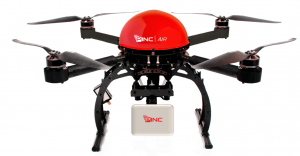
In 2015, the company has plans to take this approach to new heights with the launch of a drone-based aerial sensors system – PINC Air – with potential for rapid remote monitoring of vehicle positions in large yards. The company has already received interest from two automotive suppliers to test the technology for finished vehicle tracking inside and outside the facilities served.
The drones will be fully autonomous and built-in collision avoidance technology will provide automatic RFID data collection, as well as offering optional video capture.
The drones build on PINC’s existing patent portfolio, but it has been waiting until collision avoidance technology matures. It will share a video of the first operations at a customer location early in 2015.


























![Global[1]](https://d3n5uof8vony13.cloudfront.net/Pictures/web/a/d/s/global1_726550.svgz)









